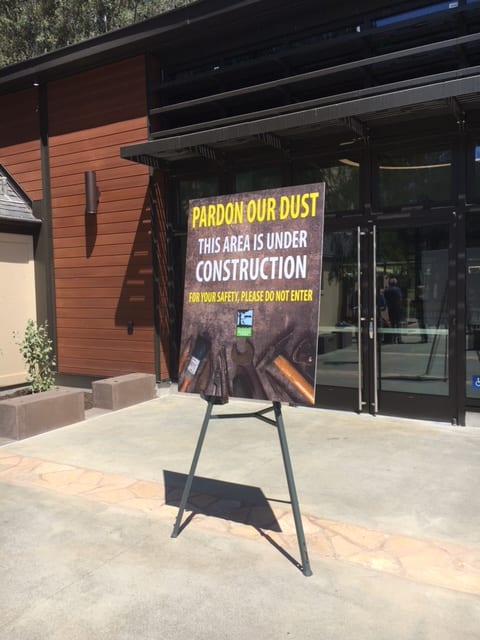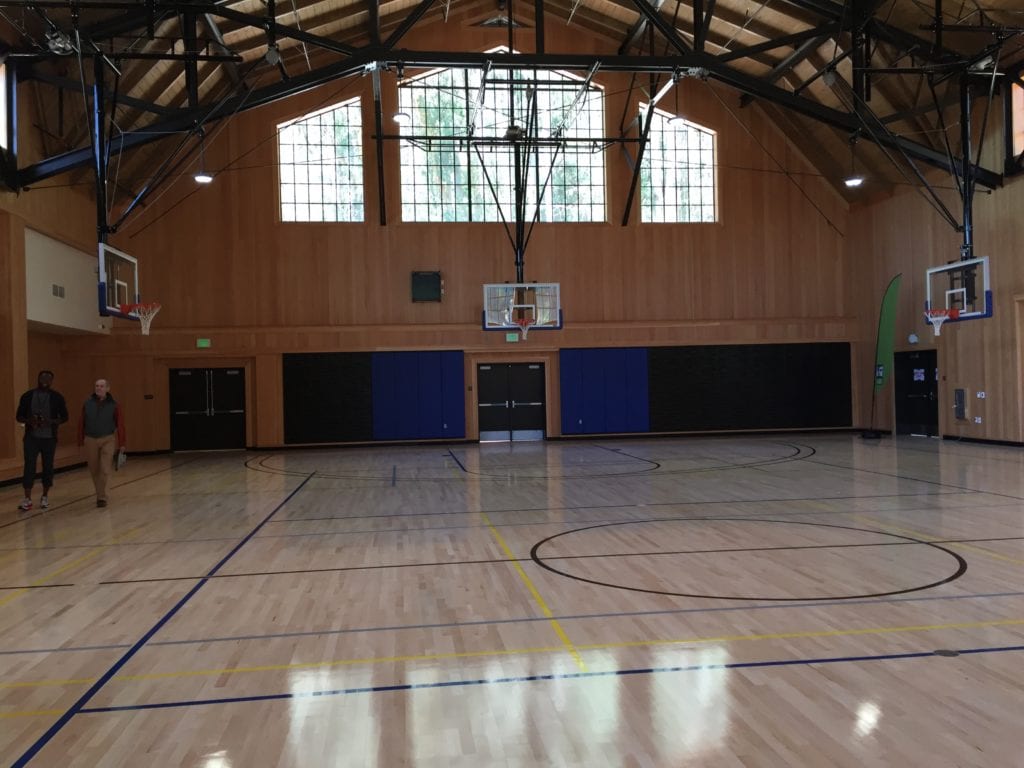
By Susan Sutton
After years of planning and $14 million, the San Francisco Recreation and Park Department led elected officials, community leaders, the media, and many who had a hand in revitalizing the Glen Park Recreation Center on a tour Monday morning.
This New Deal building, built in 1937, looks a great deal better. In fact, giving a nod to the canyon’s history of housing the country’s first dynamite factory, Mayor Ed Lee called it “Dynamite!”
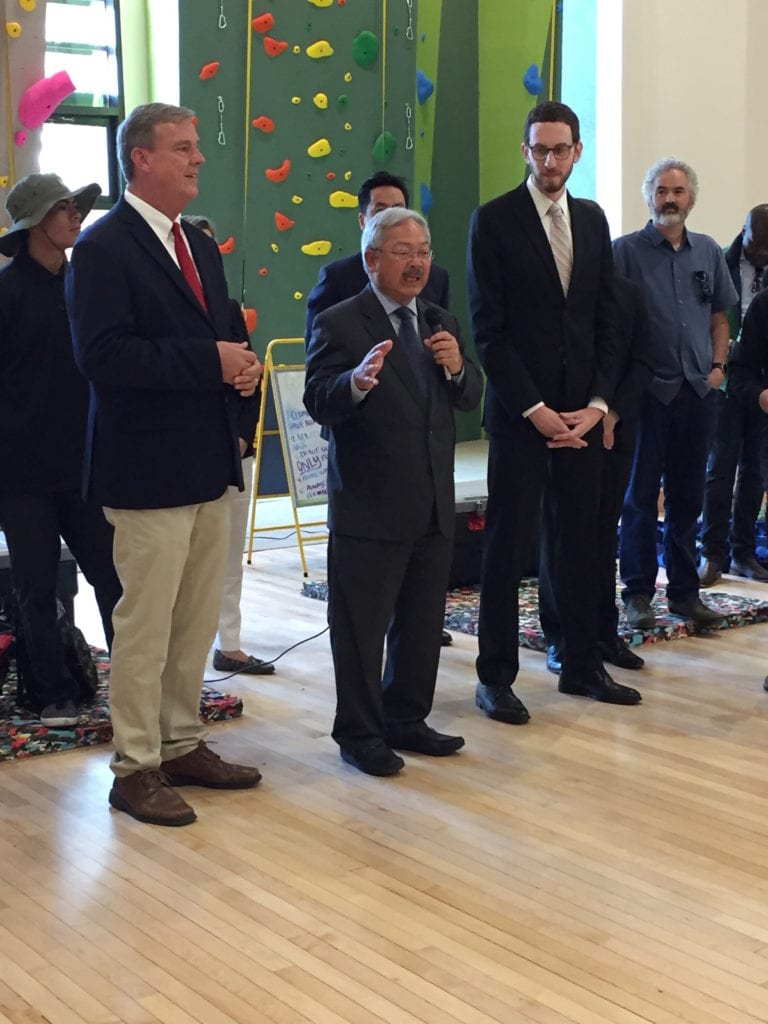
The center, which SF Rec and Park General Manager Phil Ginsburg said is the oldest in the system, features rock climbing structures in the auditorium, several multi-purpose rooms for meetings, central heating, a fireplace, a kitchen, a grand entryway for guests, an enclosed patio which opens to the terrace above the playground, solar totems and a spectacularly revitalized gym.
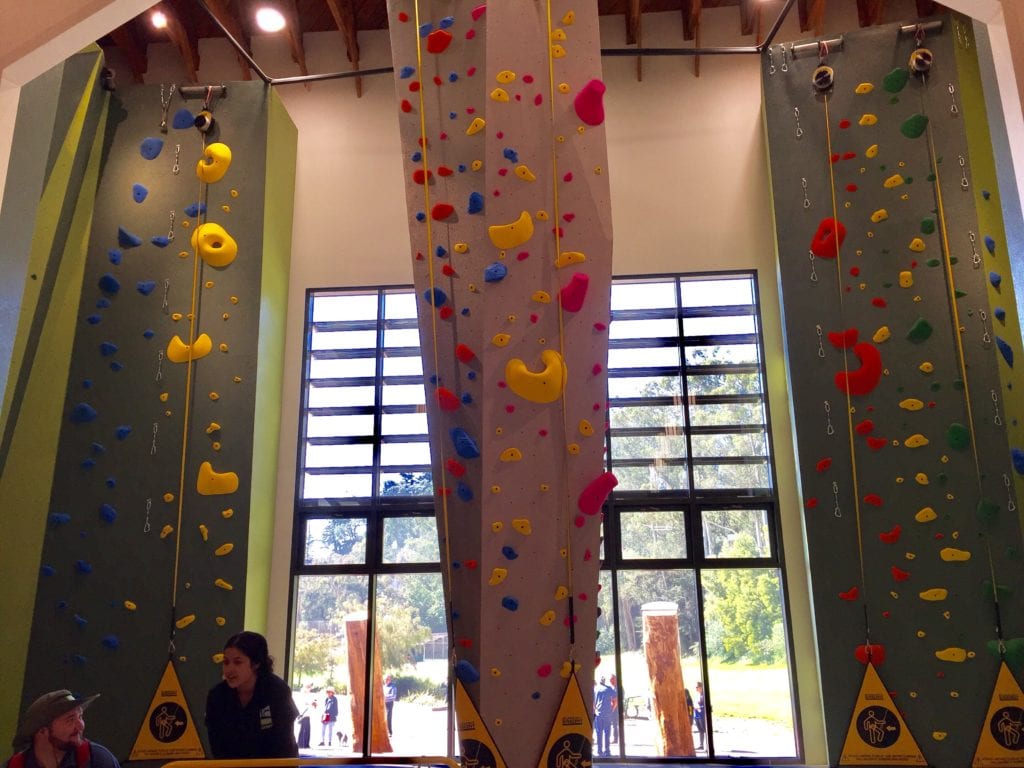
Monday was the first day of camp for the canyon’s Silver Tree Day Camp, was also the first day ever for the new Rock Climbing Camp in Glen Park. Surrounded by eager children sporting climbing gear, Ginsburg thanked those who contributed to the project by way of support or physical work and praised the park for its magnificence and endurance.
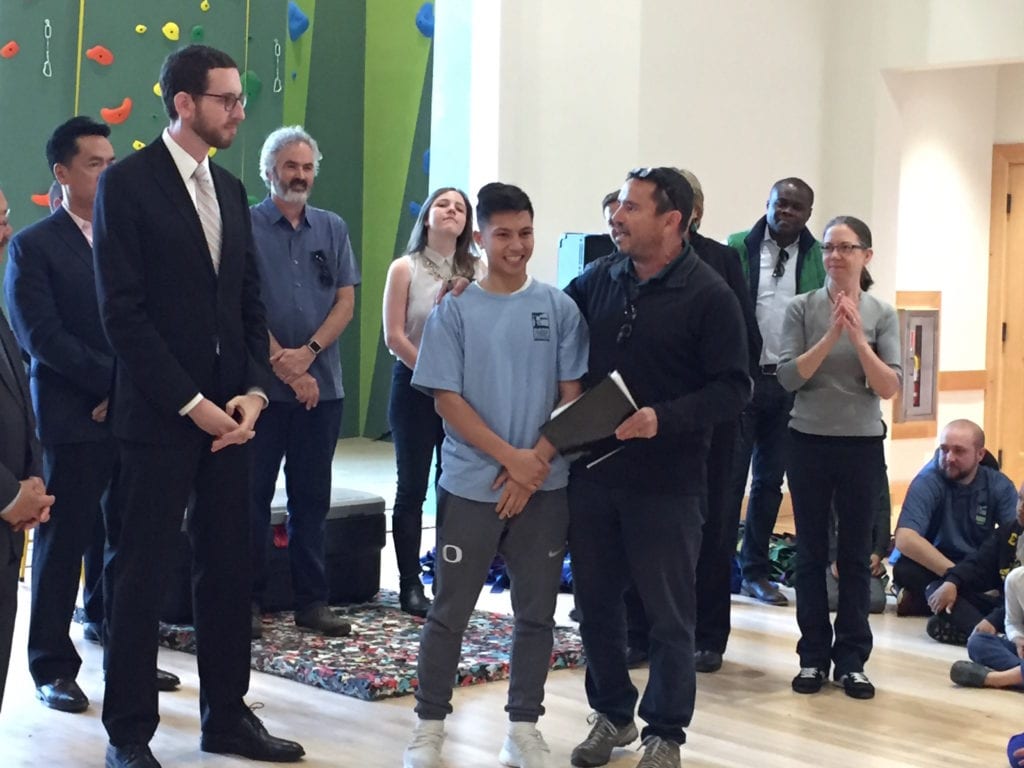
“This park survived the 1906 earthquake, it survived a threatened reservoir by another city department and it survived a freeway plan by yet another city department,” Ginsburg said. “It survived to be what it was intended to be and what it should always be – a park.”
Mayor Lee thanked city employees as well as Glen Park residents, saying, “Thanks to my Glen Park neighbors. I know my neighbors. They are relentless. They want natural beauty, not concrete.”
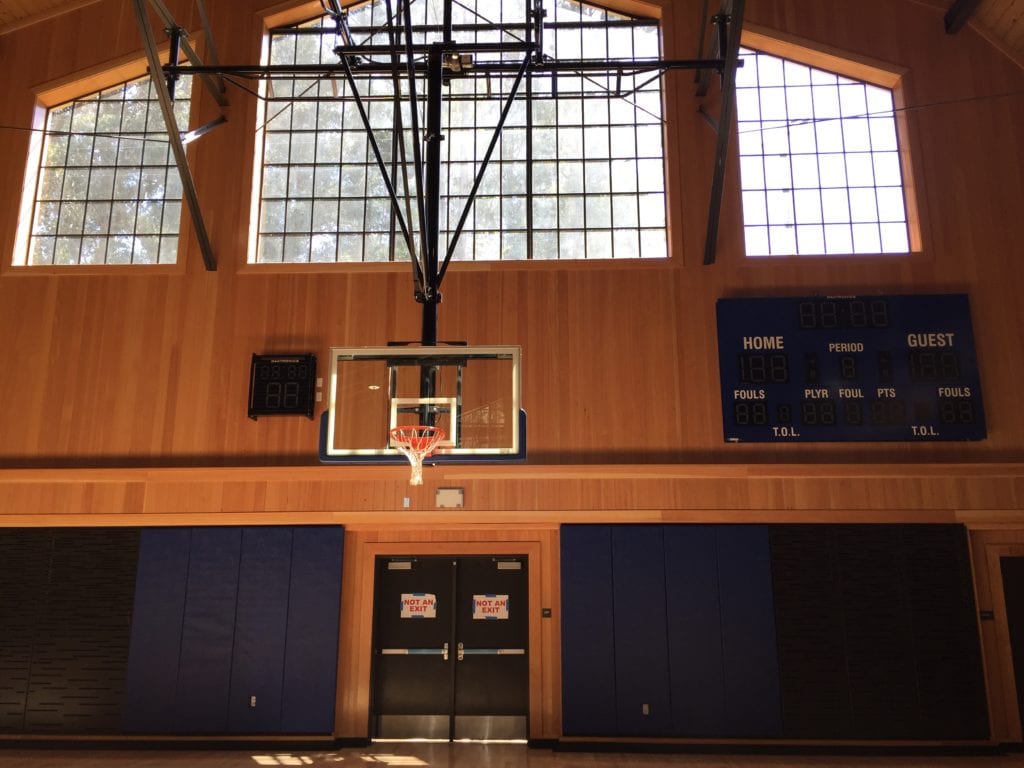 State Senator Scott Wiener, who formerly represented Glen Park as a city supervisor, said the difference is like “night and day. For generations to come, it will be a treasure for the community.”
State Senator Scott Wiener, who formerly represented Glen Park as a city supervisor, said the difference is like “night and day. For generations to come, it will be a treasure for the community.”
The district’s new supervisor, Jeff Sheehy, said the facility is “a true gift, not only to our neighborhood, but to our City.”

Perhaps the most stunning transformation is the gym, which smells like a forest of fresh Douglas fir (the walls) and maple (the floor). The original ceiling rafters were left intact. Instead of replacing them, workers cleaned them, sanded them, and then repainted them.
In addition, the floor was replaced in order to do away with years of dry rot and “dead spaces,” providing a much-desired bounce for basketball players for years to come.
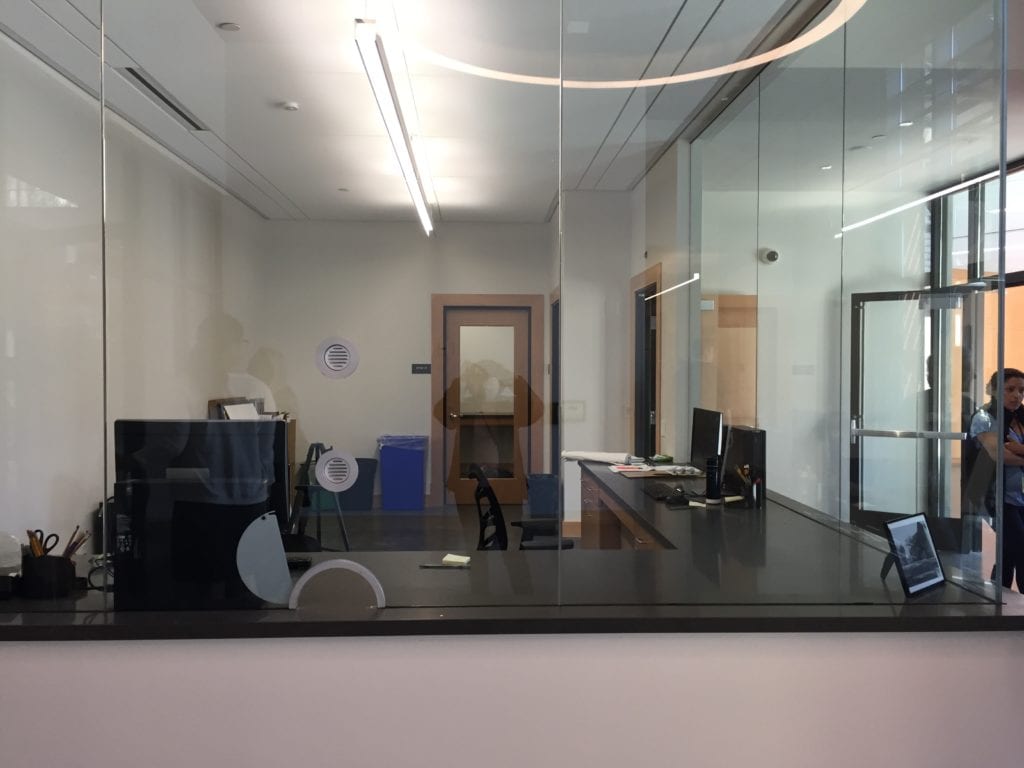
Ginsburg called it “the prettiest gym we now have in the system.”
Architect Paul De Freitas acknowledged the challenge of project, considering the building’s historical significance and the need to truly transform the center, but listened to neighbors and city leaders.

“We knew what they were looking for, and that meshed with our ideas,” he said.

After all the dignitaries left, Oskar Rosas, Recreation Coordinator for the center, walked to the new reception area, enveloped with still sparkling glass, leaned back in a swivel chair, and admired his new work space.
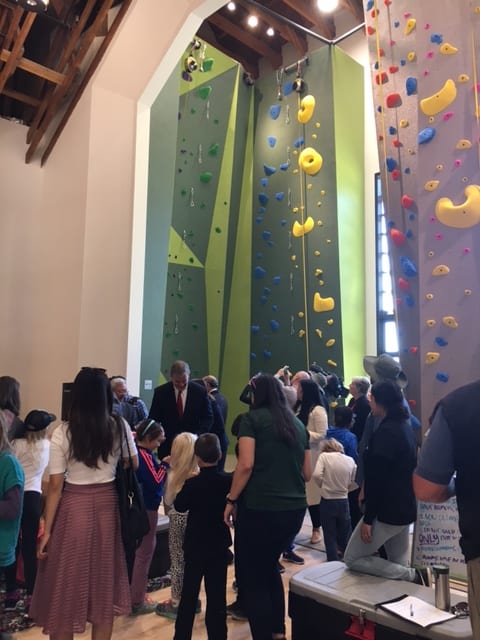
He said, “Compared to what it was, this is the Taj Mahal of San Francisco Rec and Park.”
Then, they closed the doors, put up a “Pardon our dust” sign and went back to work, striving to meet the mid-July deadline when the facility will be open to the public.
